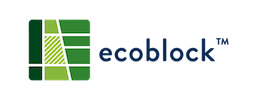In order to develop an EcoBlock, community members will have to secure funding for both the block-scale and in-home improvements. Many potential sources of funding exist, including: grants, bank loans, and public bonds. Rebates and tax incentives can also reduce the cost of investments. The Oakland EcoBlock will cover the capital cost of improvements from grant and donor funds. To demonstrate how other communities might finance and operate future EcoBlocks, we break down the improvements into two categories: private assets and shared assets.

Private Assets
Private assets are improvements that are installed within a home or on the property; they are owned by and benefit individual homeowners, even though the upgrades are orchestrated collectively. These assets can include insulation, window sealing, energy and water-efficient appliances, electrification of water heating and space conditioning, and stormwater mitigation landscaping. All together, these improvements can cost up to $50,000 or more.
Future EcoBlock homeowners will need to pay for the improvements independently, but most won’t have that much cash available and will have to finance these upgrades. Programs like Property Assessed Clean Energy (PACE) or GoGreen Home (formerly known as the Residential Energy Efficiency Loan program) can provide financial support, but interest rates are not very favorable, good credit is needed to qualify, and tenants cannot apply. Utilities in other states allow “tariffed on-bill financing,” where the homeowner borrows money from the utility then pays it back via charges added to the utility bill. Customers pay a low interest rate, people with lower credit scores can qualify, and tenants can also participate. This program isn’t available in PG&E territory yet, but there is pressure to establish one.
Shared Assets
Shared assets will be financed, owned, operated, and maintained by the homeowners association. These include the rooftop solar panels, battery storage, microgrid controller, and an electric vehicle (EV) and curbside charger.
Various financing mechanisms are available for the shared assets because they are co-owned. One option is a Community Facilities District (CFD), a public bond that is issued for a community project like a swimming pool or playground. Each participating homeowner pays their obligation through their property tax. A benefit of a CFD is that the interest rate is lower than bank loans. A microgrid like the Oakland EcoBlock’s will cost around $1.6 million, so a low interest rate is critical to minimize costs. Public benefit improvements, such as stormwater mitigation and street planting, typically benefit the broader community as well as the EcoBlock. For this reason, these improvements could also be paid for by grants or city funds.
Operation and Governance
The shared infrastructure of the EcoBlock will require funds for operation, maintenance, and insurance after the system is installed, tested, and commissioned. Each EcoBlock will need a governance entity to provide structure for participants to communicate, coordinate ongoing operation of the microgrid, and manage the flow of funds. The Oakland EcoBlock participants are establishing a governance entity in the form of a nonprofit mutual benefit corporation (the “Association”), similar to a homeowners association. The shared assets, such as battery storage, microgrid controls, solar panels, and curbside EV chargers, will be collectively owned by all participants through this Association. The Association will collect fees proportional to participants’ energy use to cover continued operation, maintenance, and insurance.
The project expects that the savings from reduced energy and water bills for each participating household will outweigh the fees needed for the operation, maintenance, and insurance of the shared assets.
Future EcoBlocks will need to ensure that the overall utility bill savings outweigh the cost of financing, operating, and maintaining the improvements. New state or local programs that offer streamlined access to capital, lower interest rates, low-cost insurance options, and microgrid revenue streams could help facilitate the development of future EcoBlocks.
Utility Tariff Structure for the EcoBlock
A tariff is the formal contract under which the utility provides service to a customer’s account, which specifies a rate schedule (such as a time-of-use schedule with different $/kWh rates at different hours) and other charges that appear on the customer’s utility bill. An appropriate tariff structure helps ensure the success of the EcoBlock and guarantees participant utility savings.
While microgrids have been around for many years, there is not currently an ideal utility tariff for multi-customer community microgrids in California. Ideally, a community microgrid tariff would benefit both the customers and the utility. Future EcoBlocks may be able to take advantage of tariffs specifically created to encourage microgrids where customers share energy and coordinate with each other.

For the Oakland EcoBlock, each participating home will use a Net Energy Metering (NEM) tariff that is used by homeowners with rooftop solar. Options include a typical Time-of-Use (TOU) rate, TOU-C; or a TOU rate for residents with EVs, EV-2A. The plan for the large central microgrid battery is to use the E-Store tariff. This battery would supply the microgrid when the utility power is out during normal operations, support the main grid, and earn some modest income for the Association. The in-home water and energy retrofits (such as insulation, sealing, and efficient appliances) should decrease participants’ overall energy and water bills. Replacing all gas-fueled appliances and equipment (heating, water heating, cooking) with electric models will eliminate the gas bill but will increase overall electricity usage and may slightly increase the electricity bill. However, the electricity bill should be significantly reduced once solar PV is added to each participating home.
